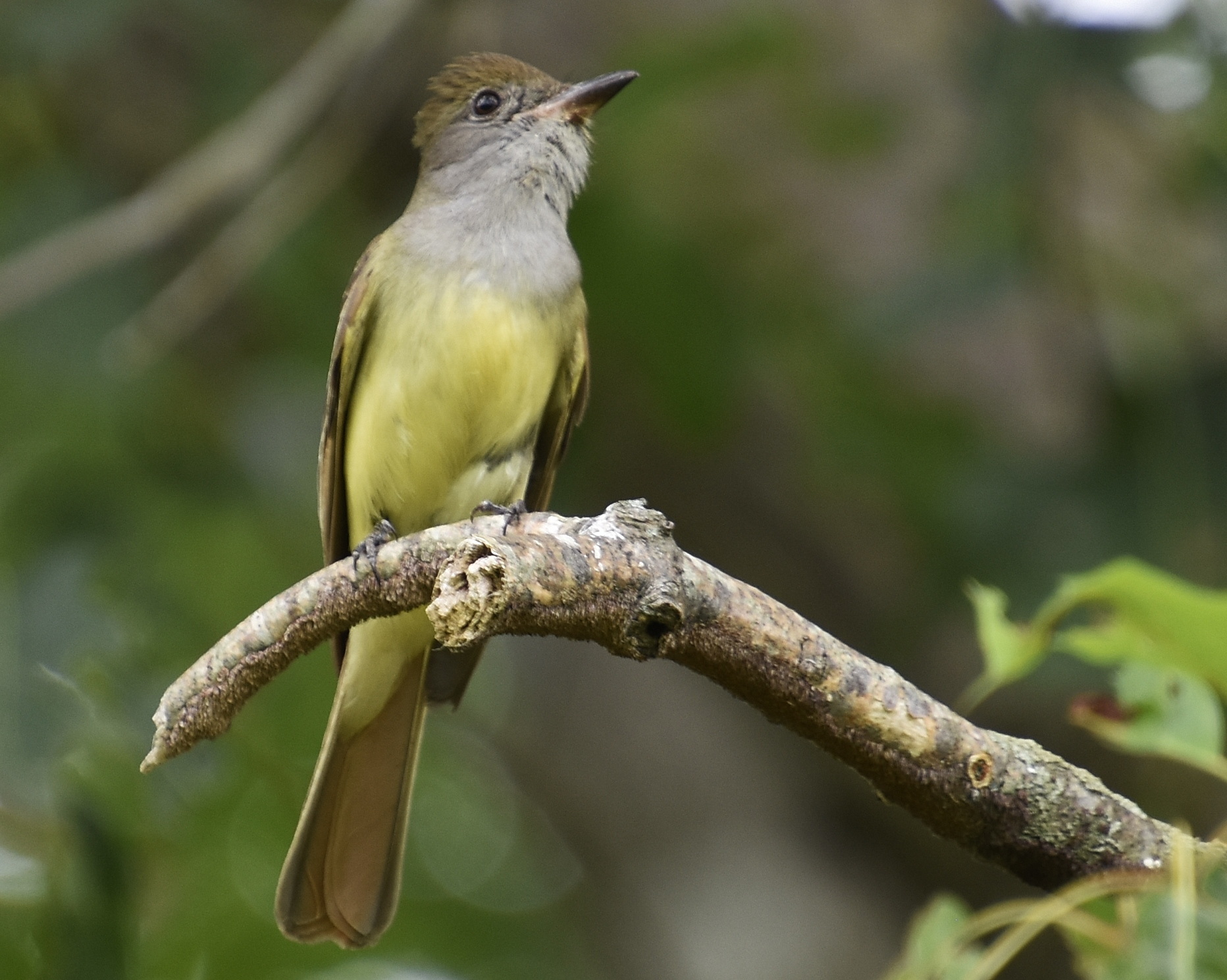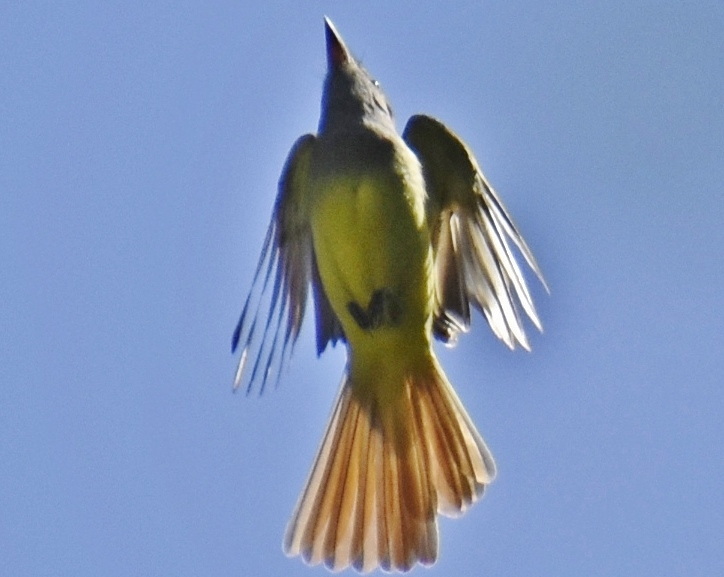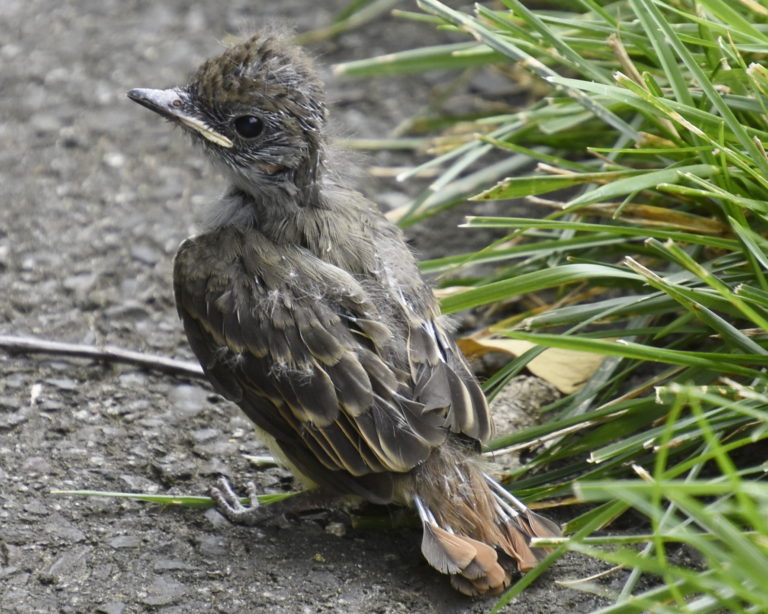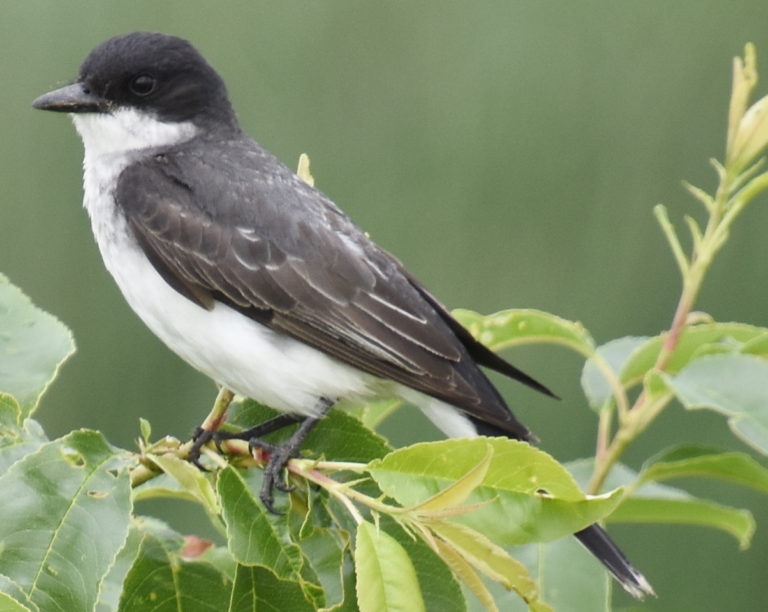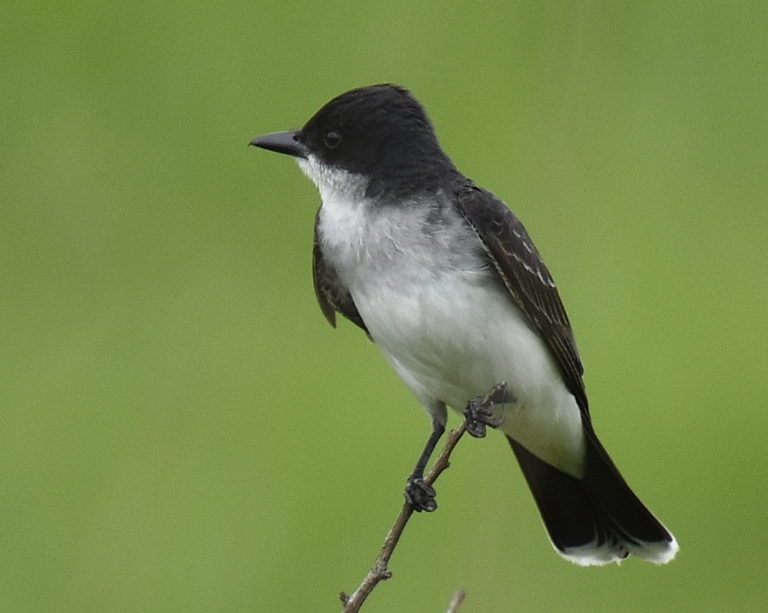Flycatchers
An interesting group of insectivores are collectively referred to as Flycatchers. Most of them are a drab plumage of gray, white, olive green and shades of yellow. Some are so similar in plumage that very good birders identify them by their different vocalizations. They are all excellent aerial hunters of insects. Fortunately for us the ones we are most likely to encounter can easily be told apart by their different plumage, behavioral characteristics and the habitat we find them in. These are Eastern Phoebe, Great Crested Flycatcher and Eastern Kingbird.
The Eastern Phoebe is one of our early Spring migrants and likes to nest along woodland streams, as well as around bridges and buildings, where we have a good chance of seeing them. This is a very plain bird with a white throat, a sooty gray head and no wing bars. Interestingly, in the Fall its breast and belly takes on a buff yellowish note and it develops faint wing bars. A key characteristic quirk is an almost constant tail bobbing that readily distinguishes it from other flycatchers. Its song is a clear “fee-bee.”
Most colorful of the group is the Great Crested Flycatcher. It has a dark gray face and chest, a bright yellow belly and a rufous colored tail. In flight, the yellow belly (extending to under the wing) and rufous tail are very easy to see. The top of the head may show a bushy crest but this is not often visible. This flycatcher is a very abundant nester in woodland areas and edges, such as along the perimeter path. It is likely to be heard before being seen, since it makes a very loud “weep” sound repeated a few times, often followed by loud “prrrt” calls. Nesting is in tree cavities, and nests may be lined with shed snake skins.
The Eastern Kingbird does not favor deep woods, but is more likely to be found in open areas, along woodland edges and open fields with a few scattered trees (like our meadow). It will also inhabit the edges of marshes (like our Kay Dee Trail) where it will perch on tall marsh plants. It can also be seen along roadsides, perched on fences and wires, as it waits to dart out and catch an insect. The key field mark for this rather plain bird is a distinctive white band at the tip of its black tail. Overall the bird is dark gray to almost black with a brilliant white throat, chest and belly.
Text and photographs by Robert Koch.

